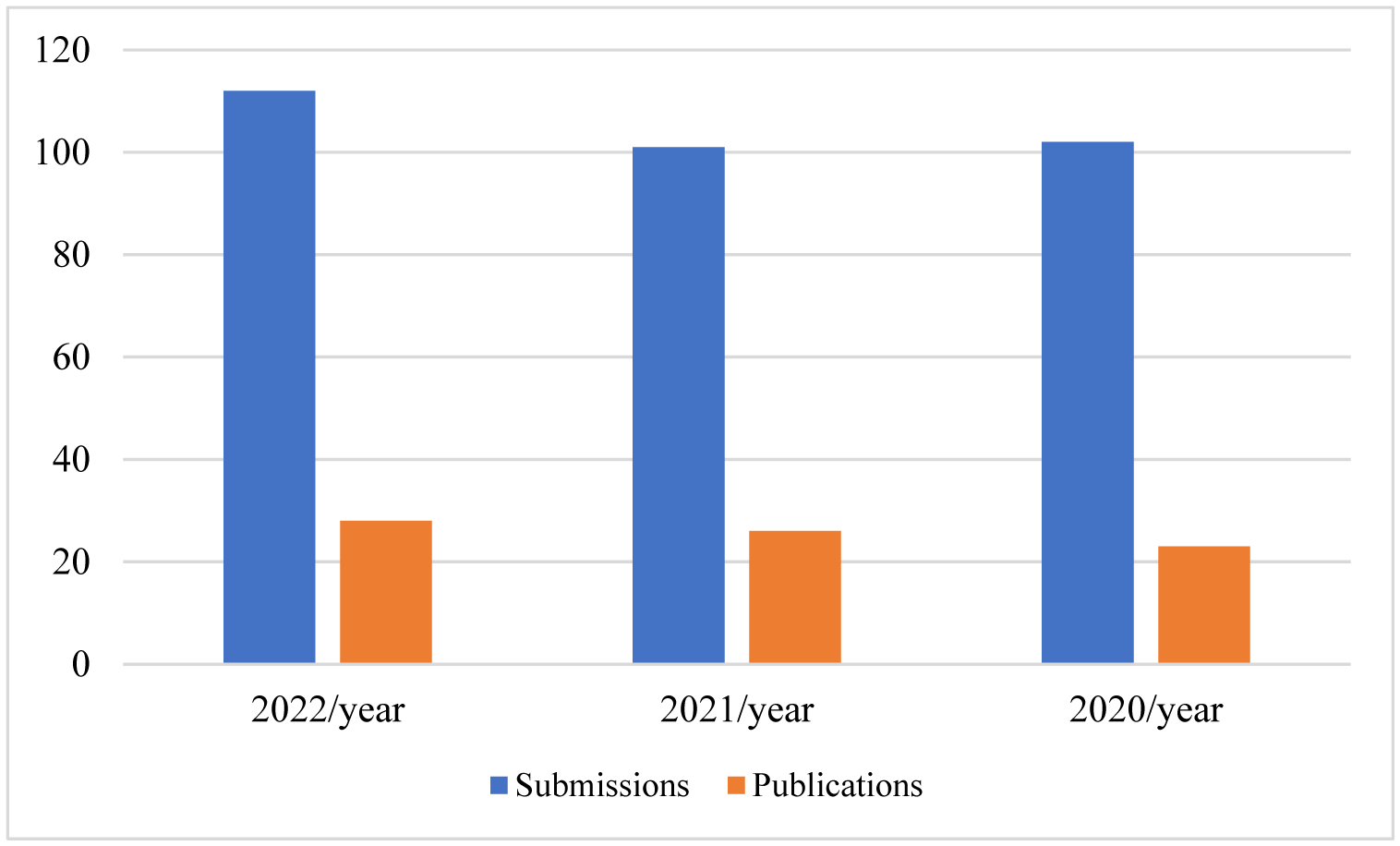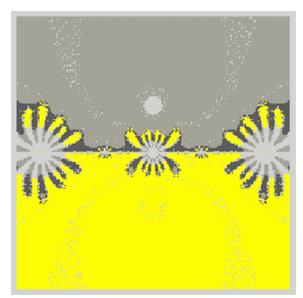The local convergence analysis of the parameter based sixth-order iterative method is the primary focus of this article. This investigation was conducted based on the Fréchet derivative of the first order that satisfies the Lipschitz continuity condition. In addition, we developed a conceptual radius of convergence for these methods. Also, we discussed the solution behavior of complex polynomials with the basin of attraction. Finally, some numerical examples are provided to illustrate how the conclusions we got can be employed to determine the iterative approach's radius of convergence ball in the context of solving nonlinear equations. We compare the numerical results with our method and the existing sixth order methods proposed by Argyros et al. We observe that using our method yields significantly larger balls than those that already exist.
1.
Journal summary from Editor in Chief
It is with admiration that we share with you our publication data for the 2022 calendar year for the AIMS Medical Science Journal. It was another successful year with the highest number of publication submissions to date over the past three years. Our depth and breadth of publications spanned multiple basic and clinical science disciplines that originated from talented authors across the globe. We look forward to an exciting year ahead and welcome the opportunity to review original manuscripts for consideration for publication in the journal. Our goals are to provide a forum of high-quality manuscripts that can positively impact the expansion of scientific knowledge and advance the health of our population.
2.
Journal development
2.1. Manuscript statistics
Below is a graphic depiction of the manuscript submission and publication data for the journal for the past three years (Figure 1). There are slightly more submissions that were received in 2022 than in 2021, and the number of accepted and published manuscripts remain stable for the past three years. Our hope is increasing the footprint of quality manuscripts submitted to the journal that will translate into an increased number of high-quality publications for the upcoming year.
2022 manuscripts status:
Publications: 28
Reject rate: 71%
Publication time (from submission to online): 109 days
2.2. Corresponding authors distribution
The geographic distribution of the corresponding authors of the published manuscripts are depicted below (Figure 2). We are honored to attract authors from around the world who chose to submit their research to the journal for publication (USA, Canada, Nigeria, Japan, etc.). Of note the majority of publications originate from authors based in the United States representing 39% of the publications followed by Canada and Nigeria standing at 11% each.
2.3. Article type
Table 1 depicts the type of manuscripts published. A total of 28 articles were published in 2022, of which, the majority were research based, 12 (43%) followed by reviews, 10 (36%).
2.4. Article metrics
Table 2 depicts the top 10 articles with the highest views, published in 2022. A focus of these top 10 articles was: Fall Risks, Monoclonal Antibody development and COVID-19.
2.5. Editorial board members
AIMS Medical Science Journal has 94 members, representing 26 countries. Thirty three percent of the members are from the United States, and other members represent Italy, France, and several other countries (Figure 3). We want to particularly acknowledge our editors: Kelly Pagidas (Editor-in-Chief), Belgüzar Kara, Gulshan Sunavala-Dossabhoy, Gwendolyn Quinn, Panayota Mitrou, Kimberly Udlis (retired), Mai Alzamel, Yi-Jang Lee, Sreekumar Othumpangat, Ji Hyun Kim, Athanasios Alexiou, Robert Striker, Andrei Kelarev, Casey Peiris, Patrick Legembre, Ramin Ataee, Louis Ragolia, Bogdan Borz, Robert Kratzke, Maria Fiorillo, Lars Malmström, Giuliana Banche, Jean-Marie Exbrayat and Elias El-Habr. Importantly, a special thank you to all the Editorial Board members, reviewers and in-house editors, and staff for their dedication, commitment, and unrelenting hard work throughout the year. We hope to attract additional scholars that will be able to join our team for the upcoming year.










 DownLoad:
DownLoad:



















